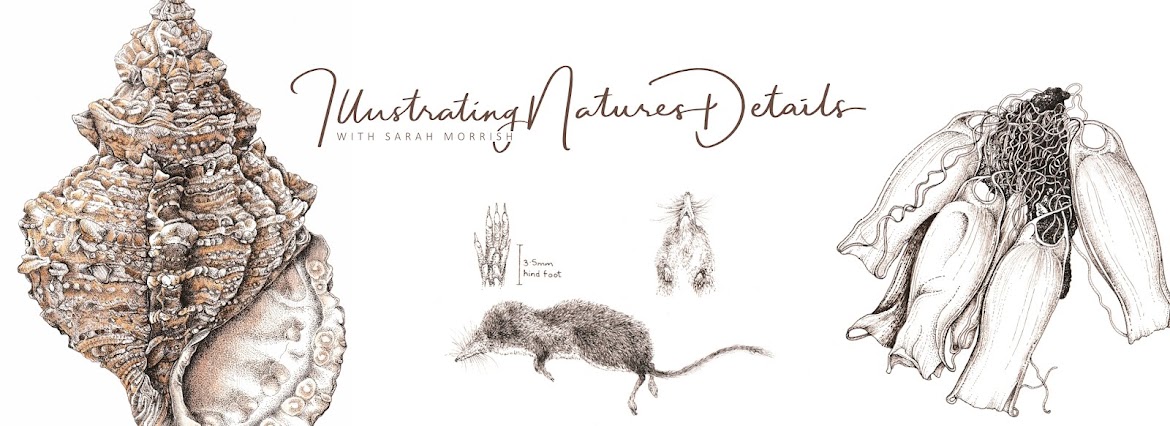Their name is thought to originate from the French word of dormer, which means to sleep. They go into this state of torpor when hibernating in winter.
The Dormouse is protected - it is illegal to disturb, kill or injure, capture or possess as Dormouse or to damage or destroy its place of nesting. I have often accompanied Licensed Dormouse Surveyors on surveys, and this license is a strict requirement if studying this creature and if there is the need to then handle and disturb them for monitoring purposes.
For further information on this species the Peoples Trust for Endangered Species has a fantastic website full of facts and figures and up to date reports on the status of Dormice and other animals.
My home county of Hampshire has its own Dormouse Group, as do several other counties. There are often activities that you can become involved in.
Back to the artwork. One of my latest commissions involves a Dormouse. Not one in torpor I hasten to add, but a more active looking one ! So on with the research.
Checking my reference images. The photo above is of a deceased Dormouse that a previous work colleague found. He brought it back to the office and I was able to make some notes and take measurements.
I really wanted to get a closer look at the subject. So back to one of my favourite places, the museum service and access to their natural sciences collection.
One specimen was available for me to view and study, and I was very lucky that it was posed in an ideal position.
Working from photographs is sometimes the only option, but being able to have the subject in front of you makes all of the difference, as you get an accurate sense of scale and colour, as well as the opportunity to take measurements.
Of course, it helps even more when the taxidermy specimen is a good one. As I mentioned in a previous post, those from the Victorian era, do sometimes have some unusual poses !
My completed study page. As well as this information helping me with my current commission, it helps to build up what I like to call my 'resource bank'.
Once I had finished the study, I spent a short while drawing a tiny Shrew as well.
There will be more news on the Dormouse in a later post, but in the meantime I am busy preparing for the Kingcombe Arts Weekend in Dorset.
This will be at the picturesque Kingcombe Centre which is surrounded by the Kingcombe Meadows Nature Reserve.
Why not come along and say hello !
I will hopefully be launching a new lino-print that I have created as part of the Art & the Hedgerow Project, as well as a new range of greetings cards which are all limited editions and hand finished, printed on Somerset authentic fine art paper, made by St. Cuthberts Mill.















